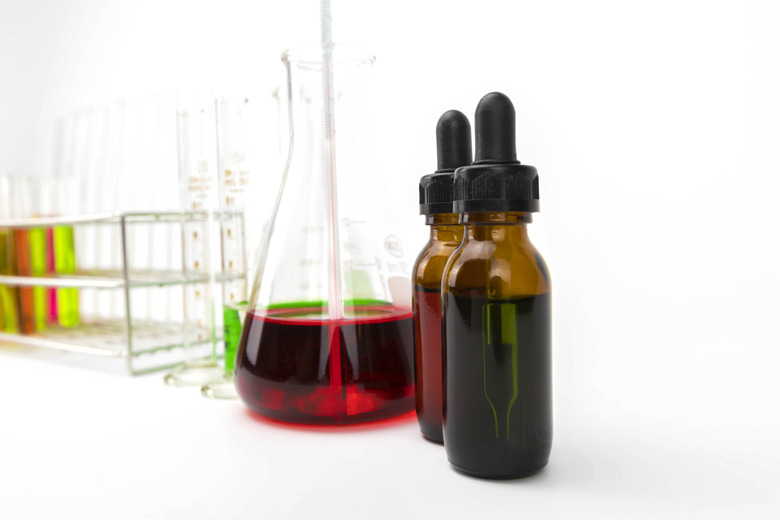How Do I Calculate Concentrations In Mixtures?
Mixture concentrations can be represented using two methods. Percent concentration represents the amount of a molecule present in relation to the total number of other molecules. Molar concentrations show the molarity of the mixture. Molarity is the concentration of specific elements or compounds in a solution. Both representations are useful in scientific calculations, but percent concentration is most commonly used and is easier to understand for everyday purposes.
Calculating Percent Concentration
Step 1
Determine the total weight of the solute (mixture) whose concentration is being measured and the total volume of the solution. The solution volume should include all liquids and solids in the mixture.
Step 2
Divide the solute weight by the total volume of the solution.
Step 3
Use the resulting decimal value for later calculations or multiply this value by 100 to show the percentage representation. If a salt solution has a total of 136 g of salt (NaCl) and the total volume of the solution is 2012 ml, then the resulting equation would be (136 g / 2012 ml) = 0.068 (or 6.8%).
Calculating Molar Concentration
Step 1
Calculate the number of moles of the solute (mixture) in the solution. Add each of the molar weights of every element in the solute as found on the periodic table. Divide the total weight of the solute by this value. If a solution has 56 g of salt (NaCl), the number of moles present would be calculated by adding the molar weight of Na and Cl together (11 + 17 = 28) and dividing the total weight of NaCl in the solution by this value (56 g / 28 g = 2 moles NaCl)
Step 2
Determine the total volume of the solution and convert it to liters. The most common conversion would be milliliters (mL) to liters (L). Perform this conversion by dividing the total milliliters by 1,000. 500 ml of solution would be converted to 0.5 L of solution (500 / 1000 = 0.5).
Step 3
Divide the number of moles present by the total volume of the mixture. The resulting value will be the molar concentration. The resulting equation for our example would be (2 moles / 0.5 L = 4 M). The molarity of concentrations is abbreviated by the letter M.
References
Cite This Article
MLA
Helsom, Shaun. "How Do I Calculate Concentrations In Mixtures?" sciencing.com, https://www.sciencing.com/do-calculate-concentrations-mixtures-6901064/. 13 March 2018.
APA
Helsom, Shaun. (2018, March 13). How Do I Calculate Concentrations In Mixtures?. sciencing.com. Retrieved from https://www.sciencing.com/do-calculate-concentrations-mixtures-6901064/
Chicago
Helsom, Shaun. How Do I Calculate Concentrations In Mixtures? last modified March 24, 2022. https://www.sciencing.com/do-calculate-concentrations-mixtures-6901064/
